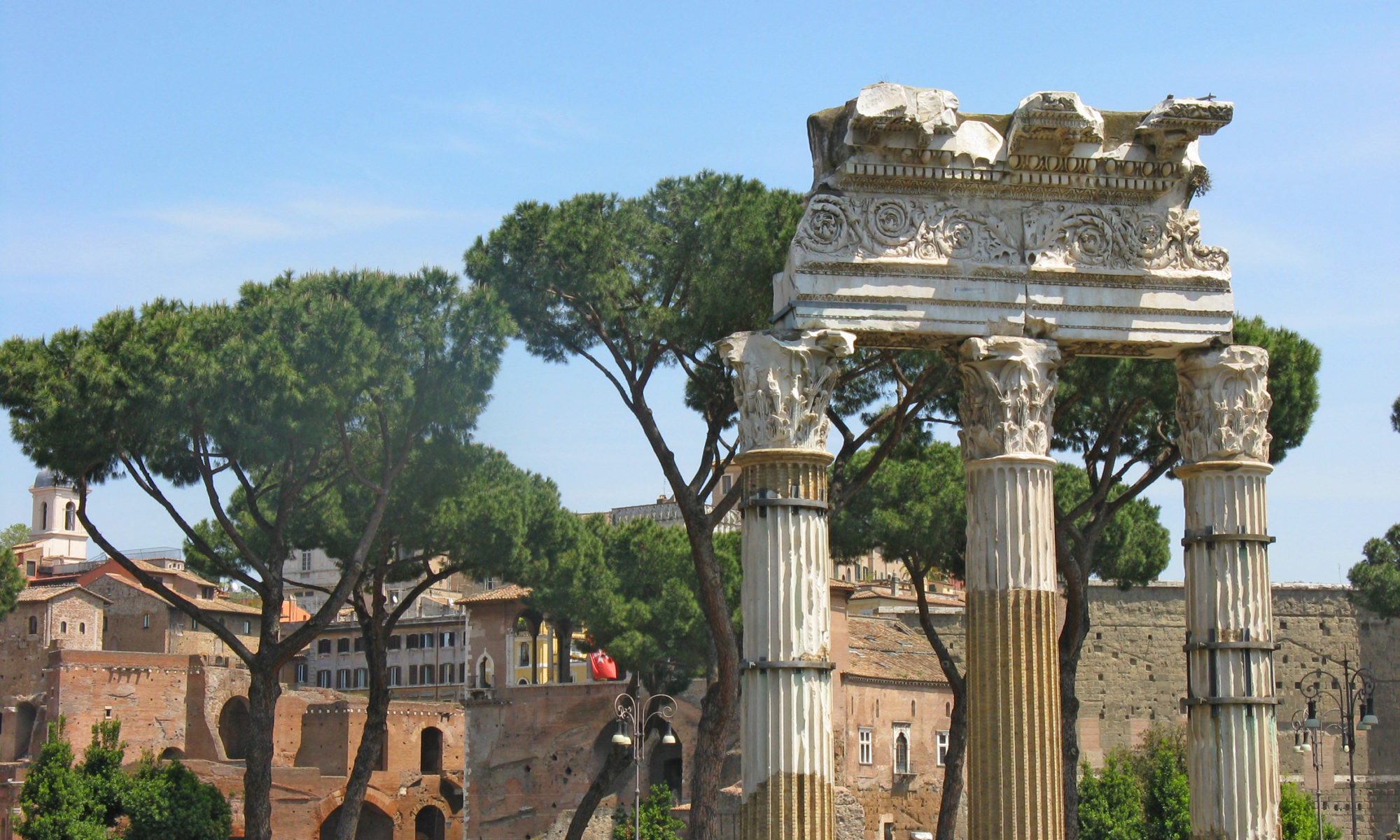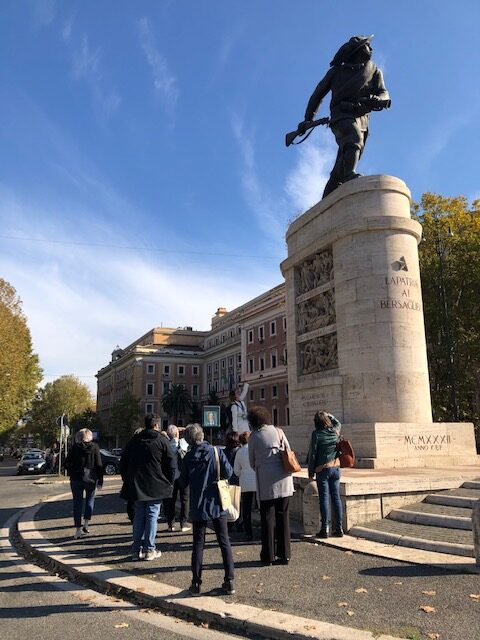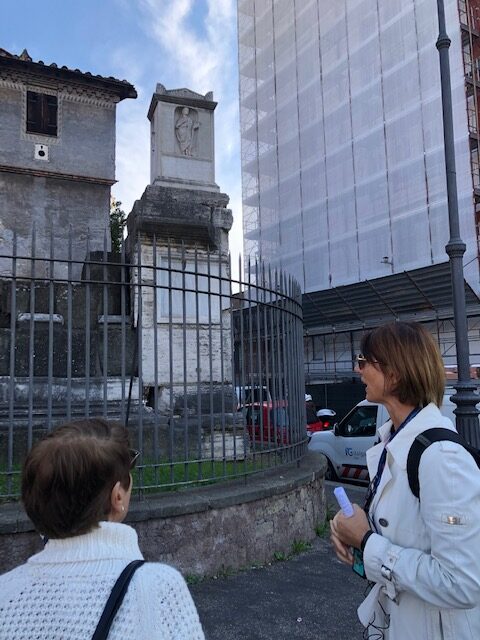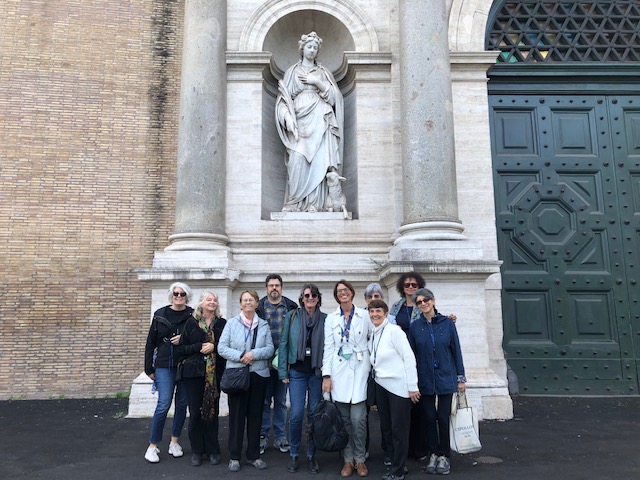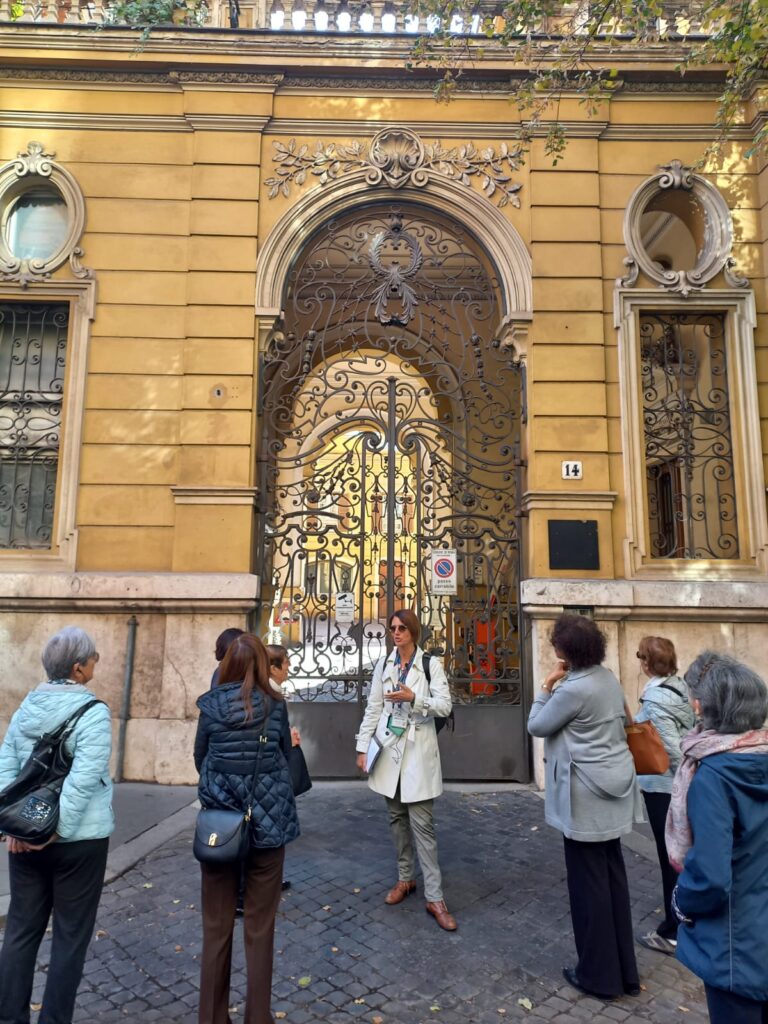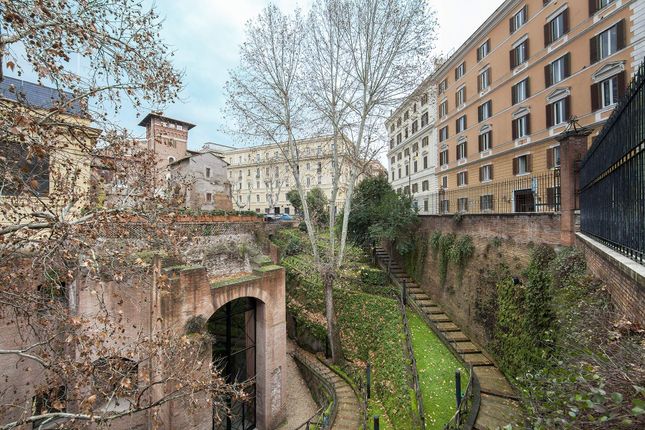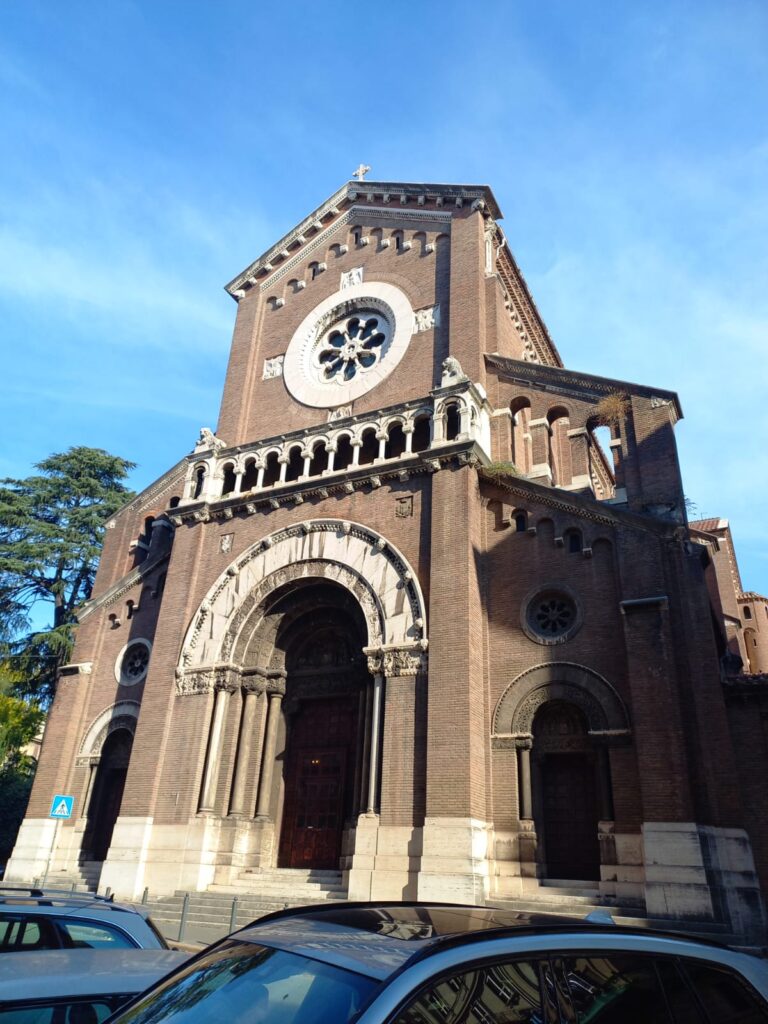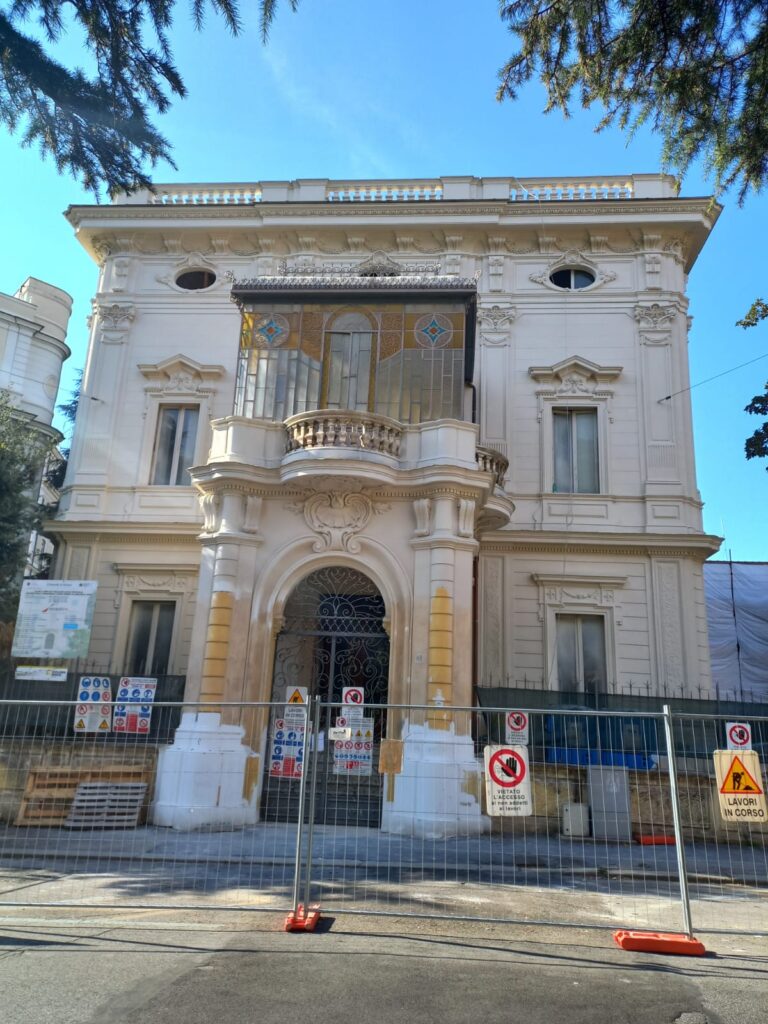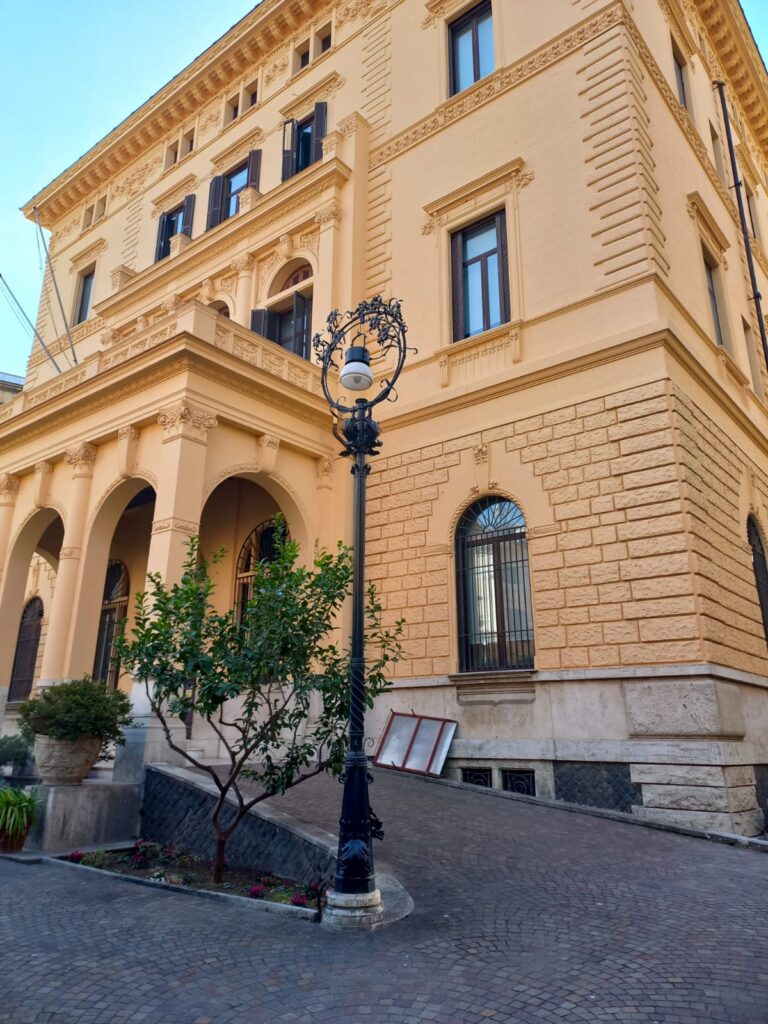It was a beautiful warm November Sunday morning, as we gathered on the white steps under the stunning Bersagliere monument at Porta Pia. As we waited leisurely for our guide, Silvia, and other attendees to arrive, one couldn’t help ask “Why are the Bersaglieri always running?” With a bit of luck, we might find out!
ThePorta Pia gate was built between 1561 and 1565 within the ancient Aurelian Walls between the Porta Salaria and the Porta Nomentana. Pope Pius IV (1559-65) commissioned plans for the gate and turned to Michelangelo to provide him with 3 designs. Famous for his frugalness, Pope Pius chose the cheapest design which was a far cry from Michelangelo’s more splendid works around the city. The inward facing Porta Pia gate was Michelangelo’s last architectural work as he died shortly before it was completed.
Silvia indicated the rather plain decorative motif on the façade above the coat of arms symbolizing a towel draped over a bowl and a bar of soap, a nod to the Pope’s humble origins, coming from a family of Milanese barbers.
On September 20th, 1870, during the unification of Italy, the troops of the Kingdom of Italy entered the city a few metres west of the Porta Pia gate. The Bersaglieri were sent ahead to scout the ground but on this occasion the army were right behind them, so they had to run to enter first. “Ah OK, now I get it!” This historic moment brought an end to the Papal rule of Rome.
Walking slowly and chatting amicably to each other along the Aurelian wall to the ruins on Via Sulpicio Massimo, Silvia entertained us with the fascinating story of the small boy poet “Quinto Massimo Sulpicio”, who was represented by a very small statute known as the “Cippo”, discovered during the enlargement of the square of Porta Salaria in 1921. His story dates to 94 BC, at 11 years of age, Quinto was already a genius and took part in a Greek poetry contest. Many famous poets competed, but Quinto, who improvised 40 verses, no doubt astonished them all. He finished third among fifty-two competitors, arousing great admiration. Sadly, due to the strenuous mental effort, he subsequently became ill and died a few days after the competition.
The next stop of our tour was the gorgeous Piazza Sallustio, home to the “Horti Sallustiani” (Gardens of Sallust). The Horti were built by the historian, Sallustio Crispo in the 1st century BC, on land that had previously belonged to Caesar. It covered the valleys and scenic slopes of the area. One of the main points of interest was the imposing remains in the middle of Piazza Sallustio; its style recalls the Canopo in Hadrian’s Villa in Tivoli.
The Horti were maintained for several centuries by the Roman Emperors as a public amenity. Over the years, many Emperors chose it as a temporary residence, as an alternative to the official seat on Palatine Hill. When Cardinal Ludovico purchased the site in the 16th century to construct Villa Ludovisi on part of the land, many important and historic sculptures were discovered, including the Obelisco Sallustiano, a Roman copy of an Egyptian obelisk which now stands in front of the Trinita dei Monti church above the Spanish Steps.
We continued our neighbourhood tour admiring the numerous, architecturally rich villini in the area, including where the famous film director Roberto Rossellini lived until he was two. We saw Villino Casata Stampa, home to the eccentric Marquise Luisa Casati Stampa known to have kept cheetahs and peacocks in her garden! We also saw the eclecticism style of the Villino Levi, where the family Levi lived until they were taken and deported to the concentration camp of Auschwitz in 1944
Today, most of the Villini are occupied by banks, and insurance companies, and even “Netflix” has carved a home among the beautiful palazzi.
Our walk continued to the spectacular and grand U.S. Embassy building, once the home of the first Queen of Italy, Queen Margherita. We were shown Queen Margherita’s “local parish church” to whom she had gifted an organ. As we strolled and admired its beauty, music form the very organ filled the street and left us in awe.
Our tour concluded with a sighting of the British Embassy, built by Sir Basil Spence in 1971. As we expressed our discontent in our very own embassy, Silvia laughed and said, “Sir Basil hated it too!”
